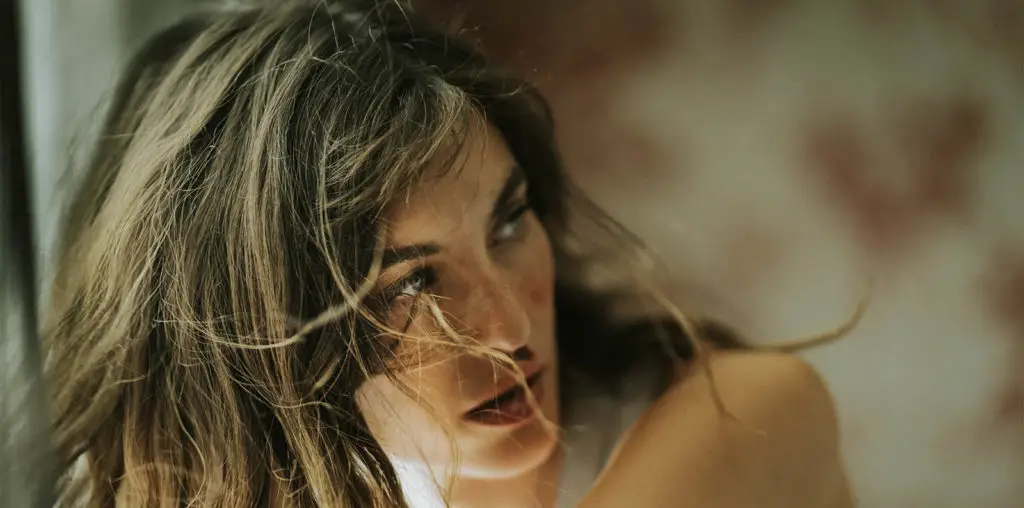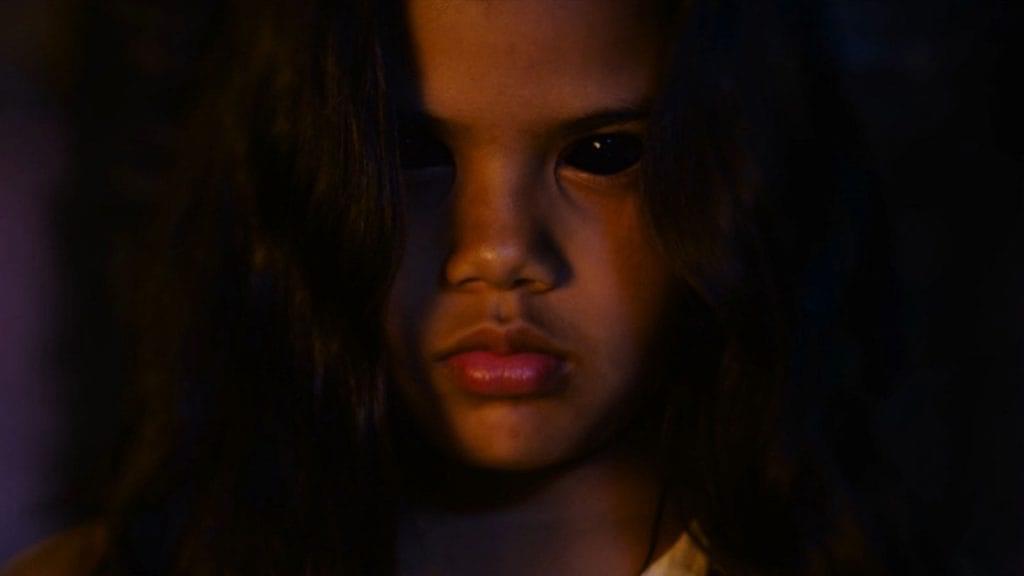
“In/Flux” is a strong collection of experimental film and video from Africa, newly released on the lowave label. Like many other lowave discs, this collection is full of strong, interesting work, which will be unfamiliar to many Western viewers. The well-produced disc also includes bios and a short “artist statement” video for each artist, and a detailed booklet. Here are some highlights:
South African artist Dineo Bopape’s powerful “Under All Means Necessary” begins with an image of the artist shaking her head, causing her long dreadlocks to sway. Over a cascade of synthesized drums, this simple gesture of refusal becomes a manic, magical whirling. Bopape has an amazing skill for manipulating low tech video glitches and digital noise to create complex abstract effects. Sounds of applause at the end of the piece reminded me (as an American) of the familiar trajectory for African American artists, where the inner impulse of refusal or defiance is transformed through artistry and skill into a magical performance which wins for the artist great popular acclaim. Bopape blends the ceremonial and the abstract, the technological and the physical, to create a genuinely new and beautiful artistic artifact which defies easy categorization.
Stacy Hardy and Jaco Bouwer’s “I Love You Jet Li” combines what appears to be surreptitious footage of isolated travelers waiting in an airport lounge (the credits indicate that they are in fact performers) with a voice-over, in which a woman tells of a hopeless series of doomed emotional attachments. The result is a brooding study, in which the modern technological world robs us completely of our ability to make real personal connections, but the longing for connection remains, spinning itself into neurotic and destructive obsessions.
In “The A77A Project,” Egyptian artist Khaled Hafez cleverly and briefly remixes hieroglyphs, comic book imagery, and footage of construction sites in Cairo, with a remixed version of Nasser’s 1967 “resignation” speech, to create a witty comment on the degradation of public spaces in Cairo, and of the ideals of the Revolution.
One low point of the DVD is “God’s Land,” an opaque and incomprehensible short by South African artist Ismail Farouk, which consists of badly shot footage of the ground on a hilltop in Johannesburg. His 14 minute Artist’s Statement explains his intentions, but at the cost of boring you with the terrifyingly vague nature of his thoughts about social, political, and cultural issues.
“Postcolonial Dilemma” is a nearly indescribable, fascinating and scary short by a Congolese artist collective known as Mowoso. Grainy footage which appears to show some kind of psychic ritual performed by a group of black men on a white woman with a knife running through her head is combined with eery electronic music and stray shots of trains and planes. Somehow, these elements combine to create a powerful sense of completely irrational magic.
“Kempinski” is a well-made experimental documentary by a French artist of Algerian descent, Neil Beloufa. Using a strategy quite similar to several documentaries by Apichatpong Weerasathakul, Baloufa asked several (male) subjects in Mali to describe the future, but to speak in the present tense, as if they are already living in the future. The results reveal a Malian perspective on technology and the future. The eerie night-time shots, with stark electric lighting, help convey the future-embedded-in-the-present feeling.
Nástio Mosquito contributes “The Real People,” a charming dance video, in which a dancer performs wildly in a Lisbon street, while everyone ignores her. The accompanying rap song describes an immigrant’s exasperation with capitalist, European culture, its competitiveness and lack of humanity. Mosquito looks in vain through the city for “the real people.”
For me, the highlight of the collection is “Rulings of the Night,” a sophisticated and mesmerizingly beautiful short by South African artist Julia Raynham. Two enigmatic figures, in studded leather masks which resemble both S&M gear and traditional African masks, carrying a leather-hooded bird, stroll through parking garages and supermarkets. The voice-over text is of a woman reciting a traditional prayer, in gorgeous language, translated in the subtitles. Raynham’s artful compositions combine various meanings of the notion of fetish: in traditional African religion, sexual practices, and in consumer society.
With “In/Flux,” the lowave label has added an important title to their growing catalogue of “must have” collections.

